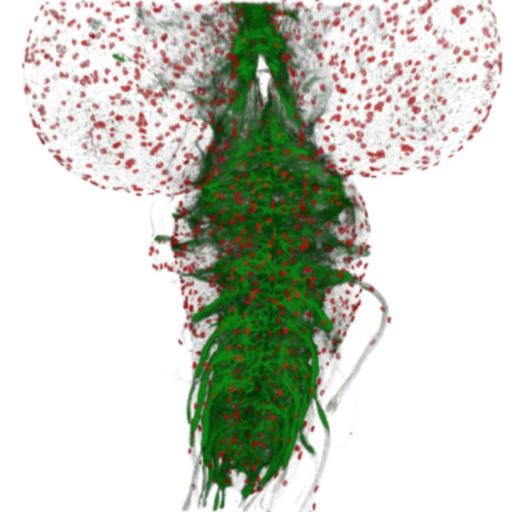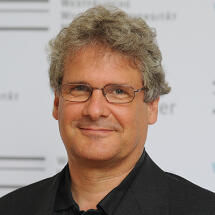Prof. Dr. Christian Klämbt
Neuro-modulatory functions of ensheathing glial cells

Blood Brain Barrier
Cell Biology / Molecular Biology
Development
Neurobiology
Specialized glial subtypes provide support to developing and functioning neural networks. Astrocytes modulate information processing by neurotransmitter recycling and release of neuro-modulatory substances, whereas ensheathing glial cells such as oligodendrocytes have not been associated with neuro-modulatory functions, yet. To decipher a possible role of Drosophila glia in neuronal information processing, we established a screen for locomotion deficits of Drosophila larvae. We are combining the FIM imaging setup that we developed (https://www.uni-muenster.de/PRIA/en/FIM/) with optogenetic activation of specific neuronal circuits and glial specific RNA interference. This way we uncover novel functions of glia as neuromodulatory cells during the control of larval locomotion. The project also involves in vivo imaging of Ca2+ dynamics together with CRISPR based approaches to generate mutants and various tagged variants of the identified candidate genes. The project will combine developmental biology, cell biology, advanced imaging techniques and behavioral neurobiology using Drosophila, a genetically amenable organism.

Vita
- 1987 – 1988: Postdoc with Prof. Dr. Jose Campos-Ortega, University of Cologne
- 1988 – 1990: Postdoc with Prof. Dr. Corey Goodman, UC Berkeley
- 1991 – 1997: Group leader, University of Cologne, Germany
- 1993: Gerhard Hess Prize, DFG
- 1997 – present: Professor at the University of Münster, Germany
- 2003 – 2015: Speaker CRC 629
- 2004 – 2005: President, German Society for Developmental Biology
- 2006: Elected EMBO member
- 2008 - 2011: Dean of the Faculty of Biology
- 2008 - 2016: Elected member of a DFG study section
- 2010 - present: Editor of MOD and GEP
- 2012 - present: Board of trustees, Boehringer Ingelheim Fonds
- 2016 - 2018: Dean of the Faculty of Biology
- Since 2018: Speaker CRC 1348
Selected references
Pogodalla, N., Kranenburg, H., Rey, S., Rodrigues, S., Cardona, A., and Klämbt, C. (2021). Drosophila ßHeavy-Spectrin is required in polarized ensheathing glia that form a diffusion-barrier around the neuropil. Nat Commun 12, 6357–18.
Winkler, B., Funke, D., Benmimoun, B., Spéder, P., Rey, S., Logan, M.A., and Klämbt, C. (2021). Brain inflammation triggers macrophage invasion across the blood-brain barrier in Drosophila during pupal stages. Sci Adv 7, eabh0050.
Kottmeier, R., Bittern, J., Schoofs, A., Scheiwe, F., Matzat, T., Pankratz, M., and Klämbt, C. (2020). Wrapping glia regulates neuronal signaling speed and precision in the peripheral nervous system of Drosophila. Nat Commun 11, 4491–17.
Petri J, Syed MH, Rey S and Klämbt C (2019). Non-Cell-Autonomous Function of the GPI-Anchored Protein Undicht during Septate Junction Assembly. Cell Reports 26, 1641–1653
Babatz F, Naffin E and Klämbt C (2018). The Drosophila Blood-Brain Barrier Adapts to Cell Growth by Unfolding of Pre-existing Septate Junctions. Developmental Cell 17 (47), 697-710
Links
